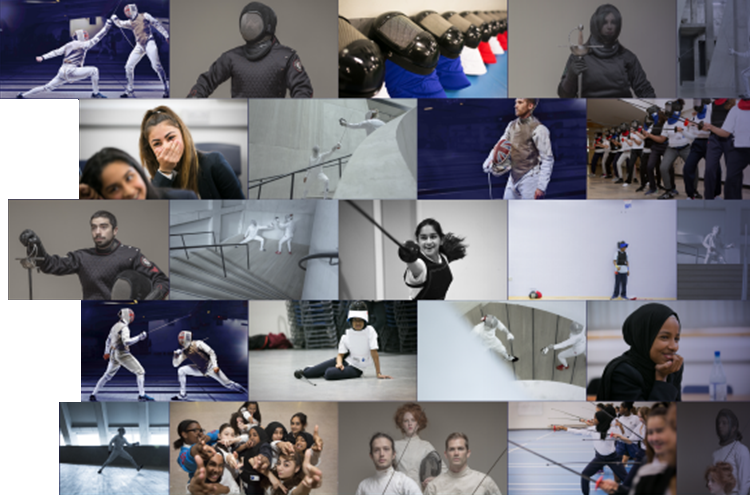GBR WEAPON STRATEGY
The purpose of this page is to provide guidance on GBR Weapon Strategy.
What is the GBR Weapon Strategy?
The GBR Weapon Strategy is a document to provide guidance and to set overall goals for each of the six weapons and to develop plans to achieve them .
On this page:
- To Achieve Success, Qualify First
- The Underlying Principle of the Weapon Strategy
- The Underlying Principles of the Athlete Need – To Achieve Success
- Golden Thread of Athlete Development
- Strategic Aims Across Six Weapons
- Short Term Goals – World Class Ready
To Achieve Success, Qualify First
3 ways to qualify for the Olympics as a Team or as an Individual via the Zonals.
- Team
Ranked in the top four worldwide or the top zonal team after the qualifying period. This requires a number of fencers capable of competing at the World Level in the qualification period.
- Individual
Qualified as part of the Team qualification or the top two zonal fencers after the qualified team fencers and other fencers that would represent a country that has qualified have been taken out of the ranking after the qualifying period has finished.
- Zonals
Each country without any athletes who are already qualified can enter a zonal competition. In this competition, the winning fencer achieves an Olympic qualification place. It normally requires strong poules and winning four Direct Elimination fights.
The Underlying Principle of the Weapon Strategy
- High-Performance Culture & Standards
A high-performance sport is a sport at its highest level of competition. It is underpinned by the High-Performance Culture components (Leadership, engaged staff, continuous improvement, and openness to change). We must challenge ourselves and our culture to make fencers as effective as possible in achieving their goals.
- Attention to the Detail
Attention to detail is needed to improve training efficiency and competitive performance continually. We must help all coaches and fencers operate with greater thoroughness and accuracy. ”What if”
- Evidence-based and Professional Judgement.
Using a balanced approach between data (informed) and evidence, analytics and going with what the staff think and feel based on their knowledge and prior experience.
- Effective & Transparent Communication
Increasing the levels of information to who needs to know, explaining the why, and listening to more of what fencers say develop the feedback process (loop).
The Underlying Principle of Athlete Need – To Achieve Success
- Time on Task
The fencer has to maximise their time between preparation, training and competing. It requires a hyper-focused approach to the activities to maximise development and performance rewards.
- Appropriate Competition
The fencer’s time on task should be complimented by the right competition and the right window of opportunity to achieve the maximum gains in either performance development and or ranking position.
- Fencing Experience
Over the development and performance pathway, fencers need to gain the experience that will sustain performance at the highest level (World-Level Game understanding and intuitive decision-making). They need clarity of technical and tactical competencies (GBR Style) and guidance on what they need to know and expect (Curriculum).
- With in mind – medals and more
The training and competing to become world-class must include the Better People – Better Fencers paradigm.
Golden Threads of Athlete Development
- Transitions – U23
Athletes constantly move through the pathway, hitting the standard at each tier and building the right skills from the pathway standards.
- Strategic Competition Planning (Plans A,B,C)
Athletes follow a tier competition plan to develop experiences that enhance learning and accelerate athlete progression.
- Training and Competition Standards (Result Expectations)
Athletes hitting training and competition standards.
- Athlete Assessment Review
Athletes individual 6 monthly meetings following a framework of review and goal setting based on the athlete assessment.
Strategic Aims Across Six Weapons
- Building a greater depth of ranking athletes in all senior weapons
- U23 Squad functions and teams qualify for U23 Europeans year-on-year
- Suitable Squad attends University Games operating every two years
- Junior – European and World Full Qualification and target results met
Short Team Goals – World Class Ready
| Goals |
Impacts on Weapon Strategy |
| To have a cohort of athletes suitable for UK Sport Academy Programme Funding by 2024 (medal by 2032) |
Focus on the younger athletes (say they are medaling age 28-32 in 2032, 17-21 now) |
| To have a World Class Ready Performance System |
Allocation of resources – focusing on process, policy and procedure. |
| To have a healthy pipeline of athletes capable of academy standard |
Focus on the transitions U20 – Seniors
U23 and National Teams. Expectations of performance behaviours lower down pipeline. |
| To have identified a small cohort with Olympic potential 2028/2032 |
The opportunities to show potential to be afforded |
Last Updated: 01/08/2023


